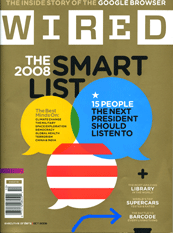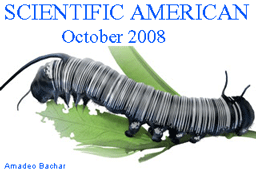 In October 2008 Wired reporter Gary Wolf profiles birth and rapid growth of standardized DNA-based species identification (ie DNA barcoding). His article centers around time spent in Costa Rica with Dan Janzen, Winnie Hallwachs, and their band of parataxonomists in Area de Conservacion Guanacaste; additional legwork includes visits to worried taxonomists at University of California Berkeley (“Honestly, I never thought it would get this far,” says Kipling Will), and University of Guelph, Ontario. He concludes with an evocative analogy: “barcodes are not just devices to put names on animals; they are also clever traps to catch all the people in the world whose curiosity impels them toward data as if toward light.”
In October 2008 Wired reporter Gary Wolf profiles birth and rapid growth of standardized DNA-based species identification (ie DNA barcoding). His article centers around time spent in Costa Rica with Dan Janzen, Winnie Hallwachs, and their band of parataxonomists in Area de Conservacion Guanacaste; additional legwork includes visits to worried taxonomists at University of California Berkeley (“Honestly, I never thought it would get this far,” says Kipling Will), and University of Guelph, Ontario. He concludes with an evocative analogy: “barcodes are not just devices to put names on animals; they are also clever traps to catch all the people in the world whose curiosity impels them toward data as if toward light.”
 An article in October 2008 Scientific American, with Sci Am’s trademark excellent illustrations, (web version; pdf) examines hows and whys of DNA-based future of species identification (I am co-author with Paul Hebert). After discussing the many practical applications for identifying known species, we conclude with our own analogy: “Just as the speed and economy of aerial photography caused it to supplant ground surveys as the first line of land analysis, DNA barcoding can be a rapid, relatively inexpensive first step in species discovery.”
An article in October 2008 Scientific American, with Sci Am’s trademark excellent illustrations, (web version; pdf) examines hows and whys of DNA-based future of species identification (I am co-author with Paul Hebert). After discussing the many practical applications for identifying known species, we conclude with our own analogy: “Just as the speed and economy of aerial photography caused it to supplant ground surveys as the first line of land analysis, DNA barcoding can be a rapid, relatively inexpensive first step in species discovery.”